*** Possible spoilers for the plot of House of the Dragon ahead, https://www.themarysue.com/heres-how-house-of-the-dragon-shapes-the-events-of-game-of-thrones/so be warned.***
Everything in the Seven Kingdoms in Game of Thrones revolves around the Iron Throne—every conflict and plot centers on that spiky chair and who is going to sit on it, in a very dangerous game that, we know by now, “you win or you die.”
We know quite a lot about the twenty (twenty-three when looking at Game of Thrones canon) kings and queens who have sat on the Iron Throne during the almost three centuries of the Targaryen dynasty and the Baratheon rulers who followed the dragonlords. It’s a testament to George R.R. Martin’s intricate worldbuilding.
And now that House of the Dragon is preparing the ground for yet another conflict for the Iron Throne, it’s as good an occasion as any to list all the rulers who have followed one another on the Seven Kingdoms’ highest seat—the good, the bad and the everything in between. Here’s every king and queen in Westeros, explained.
Confession: the first draft of this piece was more than seven thousand words because I have zero control over my love for deep lore. I tried to dial it down as much as possible, while still detailing important events in the life of each ruler—of course, some of the finer details had to be left behind.
Note—the distinctions in various periods of Westerosi history were made by me, and some Kings might also fit in the period immediately before or immediately after.
Grab some snacks and get comfortable, it could be a long ride.
The Conquest
1. Aegon I Targaryen, the Conqueror
Aegon Targaryen, known as Aegon the Conqueror, did exactly what his epithet suggests. From the Targaryen seat of Dragonstone—where the family had established their home after having escaped the Doom of Valyria—he conquered Westeros with the notable exception of Dorne, creating the realm that we have come to know as the Seven Kingdoms.
He was crowned by the High Septon in Oldtown, and he was the one who started the construction of the new kingdom’s capital, King’s Landing. His reign lasted for around forty years—years that started to be counted as AC, “After the Conquest,” and BC, “Before the Conquest”.
Queens: Visenya Targaryen & Rhaenys Targaryen
Aegon’s sister-wives fought with him in the Conquest with their own two dragons—Visenya, the oldest of the three, on top of Vhagar, and Rhaenys, the youngest, with Meraxes.
Visenya helped bring the Vale into the new kingdom by flying Vhagar to the Eyrie and bloodlessly dethroning the child Falcon King. Rhaenys was the first to try and have Dorne bend the knee—she was denied by the Princess of Dorne, and it would be a good two centuries before the southern part of Westeros became part of the Seven Kingdoms. Rhaenys and Visenya both gave Aegon one child each— Aenys and Maegor respectively, who would end up both sitting on the Iron Throne after their father’s passing.
2. Aenys I Targaryen
Aenys was the eldest child of King Aegon I and Queen Rhaenys—as well as the king who started a line that would continue (mostly) unbroken until the fall of the dragons, with fifteen out of the sixteen Targaryen kings being direct descendants of Aenys. He was a dragonrider like his parents, having bonded with the she-dragon Quicksilver.
He was a somewhat good king, even though there were doubts about his suitability for the Iron Throne— especially when in comparison with his younger half-brother, Maegor. Aenys’s reign was plagued by rebellions throughout the realm, from the Riverlands to the Iron Islands to Dorne.
His reign only lasted 5 years. It was the king’s half-brother Maegor who decided to take a second wife—really, these Targaryen younger brothers are all the same—and refused to set her aside, forcing Aenys to exile him from court. Then, there was the question of the marriage between the King’s eldest children, Prince Aegon and Princess Rhaena—perfectly normal among Valyrians but seen as an abomination by the Lords of Westeros.
Queen: Alyssa Velaryon
Alyssa Velaryon was the daughter of King Aegon I’s master of ships, as well as Aenys’s cousin—then again, these are the Targaryens we’re talking about so a match between cousins is probably one of their least incestuous. Alyssa and Aenys had six children—Rhaena, Aegon, Viserys, Jaehaerys, Alysanne, and Vaella, who died just a handful of days after her birth.
Queen Alyssa had a major part to play in the struggles for the throne that followed Aenys I’s death, supporting the causes of her sons Aegon and Jaehaerys (who ended up becoming King, with Alyssa serving as his regent while he was a minor).
She later married Lord Rogar Baratheon, in a ceremony so lavish it would become known as the Golden Wedding. Alyssa had two more children from Lord Rogar—Boremund and Jocelyn Baratheon. The birth of her last child was immensely difficult and ended in the same way as Queen Aemma’s in House of the Dragon.
3. Maegor I Targaryen, the Cruel
Maegor was the only child of King Aegon I and Queen Visenya. For a while, he had been his eldest half-brother Aenys’s heir—until the birth of Aenys’s first son, Aegon.
But when Aenys I died, Maegor immediately claimed the crown for himself with the help of his mother and proceeded to live the six years of his reign in an endless struggle for the Iron Throne against pretty much everyone—his nephew Aegon, the Faith of the Seven, Westerosi lords who didn’t accept his rule, you name it. Maegor and his mother Visenya dealt with many of these with dragon fire, burning cities and castles—or threatening to burn them, which in several cases was more than enough.
Aegon’s claim to the Iron Throne was also resolved similarly— uncle and nephew clashed with their dragons, Balerion and Quicksilver, in the famous Battle Beneath the Gods Eye. Aegon the Uncrowned and Quicksilver were no match for the massive Balerion— killing his nephew earned Maegor the title of kingslayer and the epithet of “the Cruel.”
He also allowed Aegon’s younger brother Viserys to be tortured, exterminated the entire House of his second wife because he suspected her of infidelity, and that killed all the workers that had participated in the construction of the Red Keep—so that only Maegor would know all of its secrets.
His end came when the last of Aerys’s surviving sons, Jaehaerys, put forth his claim on the crown— Great Houses rose against Maegor left and right, and ultimately, he was found dead on the Iron Throne, impaled on one of its blades.
Queens: Ceryse Hightower, Alys Harroway, Tyanna of the Tower, Elinor Costayne, Rhaena Targaryen, Jayne Westerling
Maegor fully embraced the Valyrian tradition of taking multiple brides, all in an attempt to have a male heir to continue his line—and considering that he had six brides in total, it’s pretty clear which real historical figure George R.R. Martin got his inspiration from.
Lady Ceryse Hightower was the then High Septon’s niece—the marriage was celebrated as an alternative to what Maegor truly wanted—to marry his niece Rhaena and unite the two lines of succession. Maegor wed his second wife, Lady Alys Harroway, under the justification that Lady Ceryse was barren. The High Septon still wouldn’t perform the ceremony, which was officiated on Dragonstone by Queen Visenya herself—as a consequence, Aenys I was forced to send Maegor and Alys into exile in Pentos.
From Pentos arrived Maegor’s third wife, Tyanna of the Tower, who was said to be the paramour of both the King and Queen Alys, as well as an expert in the dark arts of poison and torture. She served as Maegor’s mistress of whispers, while also poisoning all of her fellow brides to make sure their pregnancies would result in stillborn children—something that caused her demise at the King’s hand when she was found out.
Finally, there were the three Black Brides— Lady Elinor Costayne, Lady Jeyne Westerling, and Princess Rhaena. They were all women who had already had children and whose fertility was proven, whom Maegor wed in one single ceremony. Only Lady Elinor and Princess Rhaena survived their marriage to Maegor.
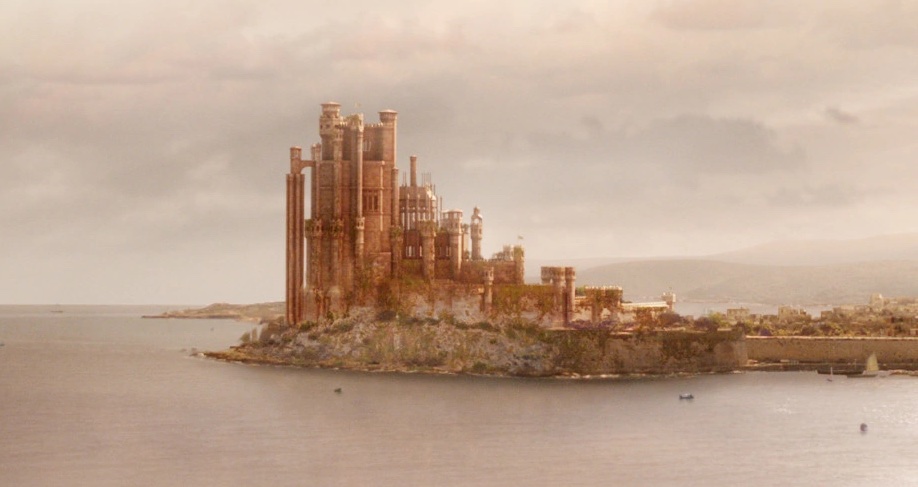
The Golden Age
4. Jaehaerys I Targaryen, the Conciliator
Widely considered to be the best king to have ever sat on the Iron Throne, Jaehaerys’s fifty-five years on the Iron Throne became known as a golden age of splendor and prosperity after the struggles for the crown that had plagued the reigns of his father, Aenys I, and uncle, Maegor I.
Bonded with the dragon Vermithor, Jaehaerys ascended the Iron Throne after having risen against Maegor, with the support of pretty much all of the Great Lords of Westeros. Once he came of age and started to rule in his own right, Jaehaerys embarked on a great number of progresses throughout the realm—visiting lords great and small. He worked on the first unified code of law, even though the changes would take years to be implemented, and ordered several improvements to King’s Landing and the realm at large, from sewers and public fountains to a proper system of streets uniting all the major castles. He fought in two Dornish Wars—the Third at sword point and the Fourth on dragonback with his eldest sons.
His personal life was marked by both great joys and sorrows—he had a numerous family, even though many of his children never lived past childhood; he also had to tackle the issue of his succession, which he did with the Great Council that decided his grandson, Viserys, would rule after him.
Queen: Alysanne Targaryen
Alysanne was Jaehaerys’s younger sister, and initially, their mother, Alyssa, did her best to prevent the two from marrying—knowing very well what the reaction to the wedding of her first two children, Aegon and Rhaena, would spark throughout the realm and for the people of the Faith.
Jaehaerys and Alysanne married in secret, however, and announced their marriage when it was already consummated and therefore permanent. Alysanne was bright, charming, and politically savvy—she was Jaehaerys’s most trusted advisor and was instrumental in eradicating some outdated practices like the right to first night, a proposal which came out from the women’s councils she used to hold wherever she went during the royal couple’s trips.
She was also particularly well-loved by the Night’s Watch—since it was Alysanne who convinced the lords of the North to give the lands of the New Gifts to the brothers of the Watch.
Her life with Jaehaerys was for the most part serene, and Alysanne gave birth to a grand total of thirteen children—although only some of them made out to adulthood. She had only two great rifts with Jaehaerys, known as the First and Second Quarrels—the first was sparked by Jaeherys refusing Alysanne’s request to bring their exiled daughter, Saera, home. The Second Quarrel was about the same issue that would later be discussed in the Great Council and set the precedent for the Dance of the Dragons—when Jaeherys’s heir Prince Aemon died, he chose to name his second son, Baelon, the Prince of Dragonstone rather than Aemon’s child, Princess Rhaenys.
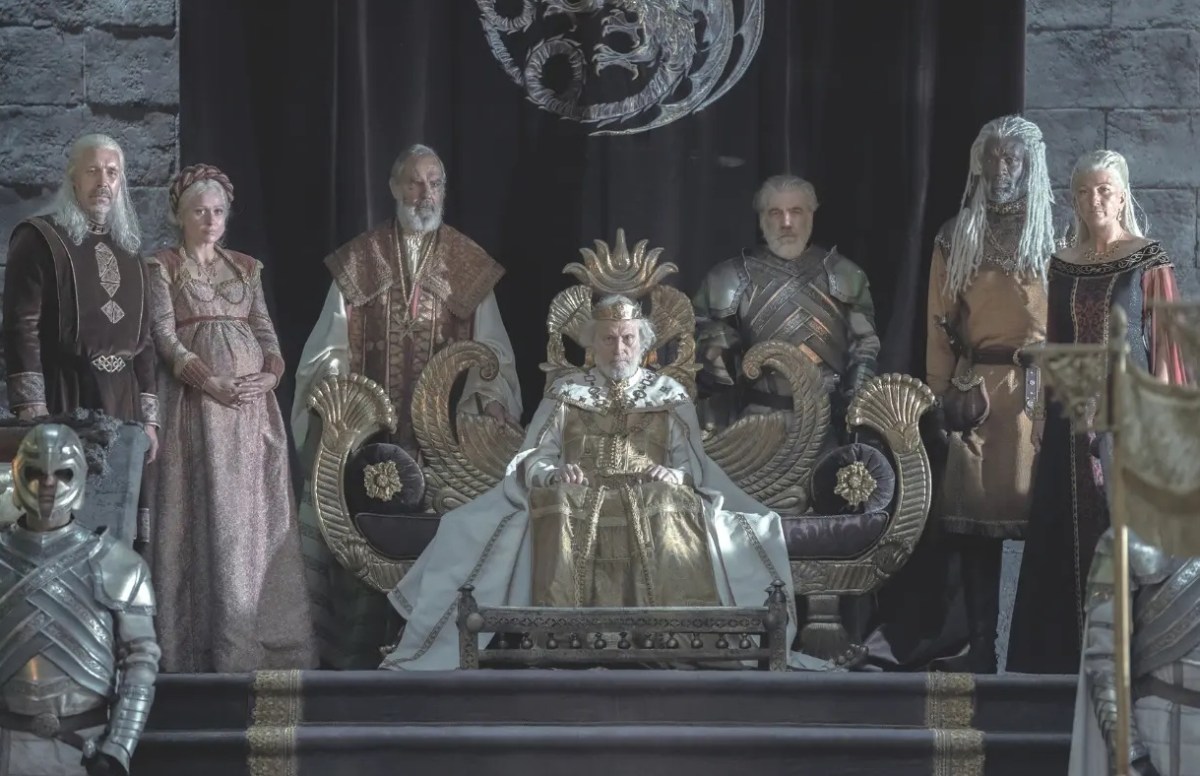
5. Viserys I Targaryen
We know quite a bit about the fifth king to sit on the Iron Throne, since he’s one of the main characters of this first season of House of the Dragon, but let’s recap anyway. Viserys, son of Jaehaerys’s second son, Baelon, and his sister-wife, Alyssa, was named Prince of Dragonstone and heir to the throne during the Great Council his grandfather called to settle the succession issue. Viserys was chosen over his cousin Rhaenys on account of him being a man.
His reign lasted twenty-six years, during which Viserys did his best to avoid conflict—sometimes letting it fester in the process—and focused on making the Red Keep and King’s Landing places of splendor by hosting balls and tournaments, which made him well-loved by the nobles and the smallfolk alike.
The question of succession, though, would torment Viserys all throughout his reign. On the one hand, there was his only daughter by his first Queen, Aemma Arryn—Rhaenyra Targaryen was the appointed Princess of Dragonstone and had been groomed to become ruling queen ever since her teenage years. On the other, there were the children Viserys had with his second wife, Queen Alicent Hightower—and behind them the mighty power of Lord Otto Hightower, Viserys’s Hand.
And that’s without even considering Viserys’s younger brother Daemon—first Commander of the City Watch, then exiled, then King of the Narrow Sea, then reconciled, then exiled again.
As the families from both sides grew, so did the animosity between the “blacks,” who supported Rhaenyra’s claim, and the “greens,” who favored Aegon and Queen Alicent. Viserys’s death was the final spark that ignited the destructive civil war known as the Dance of the Dragons.
Queens: Aemma Arryn, Alicent Hightower
Viserys’s first wife was his cousin, Aemma Arryn—daughter of his father Baelon’s sister, Daella, and Lord Rodrik Arryn—who gave him a daughter, Rhaenyra, dubbed “the realm’s delight.” After Aemma’s death in childbirth, as she was trying to deliver a son, Viserys was urged by his councilors to remarry—the ideal choice would have been Laena Velaryon to heal the rift between the Iron Throne and Driftmark, but Viserys chose Alicent Hightower instead.
Alicent, the daughter of Viserys’s Hand Otto Hightower, gave Viserys four more children—Aegon, who would end up spending his life fighting in the Dance of the Dragons; Helaena, Aegon’s future sister-wife and Queen; Aemond, known as Aemond One-Eye due to an injury that claimed one of his eyes—he would become famous for using a sapphire to replace it—and Daeron.
The Dance of the Dragons
6. Aegon II Targaryen
The official list of kings of Westeros immediately moves from Viserys I onto his son Aegon II—meaning that Rhaenyra isn’t included in the count. But the reign of Aegon II is effectively marked by the Dance of the Dragons—so here’s how things go down.
Aegon was crowned by his mother, Queen Alicent, immediately after the death of his father—technically they should have sent messengers to Dragonstone to call the King’s designated heir back to the capital, but the Great Council had set a precedent of male descendants being preferred over older female descendants, and so, that was what the greens used to crown Aegon and place him on the Iron Throne instead of bowing to Rhaenyra.
This obviously didn’t sit well with Rhaenyra, throwing the Dance into full swing. The war would grow bloody and brutal, with battles claiming Targaryen heirs (and their dragons) left and right. In the midst of all of this, though, Aegon was poisoned—several culprits confessed and were punished, but the King’s death effectively put an end to the war.
Queen: Helaena Targaryen
Helaena was Aegon’s sister-wife, and the two had three children together—the twins Jaehaerys and Jaehaera, and Maelor. As the Dance began, Helaena and her three children remained in King’s Landing with her mother, Dowager Queen Alicent—and that’s where one of the bloodiest moments of the Dance took place.
Helaena was surprised in her chambers by two assassins sent by Daemon Targaryen and his mistress Mysaria—they were there to kill one of Helaena’s children as vengeance for the death of Rhaenyra’s own son, Lucerys Velaryon.
They asked that Helaena should choose which one of the princes should die, and threatened to kill all three if she should refuse—and so Helaena marked her youngest, Maelor, whom she hoped wouldn’t understand what was going to happen. The assassins instead killed the oldest of the three, Jaehaerys.
This terrible event sent Queen Helaena into a spiral of grief and madness and ultimately she jumped to her death one year later from one of the windows of Maegor’s holdfast.
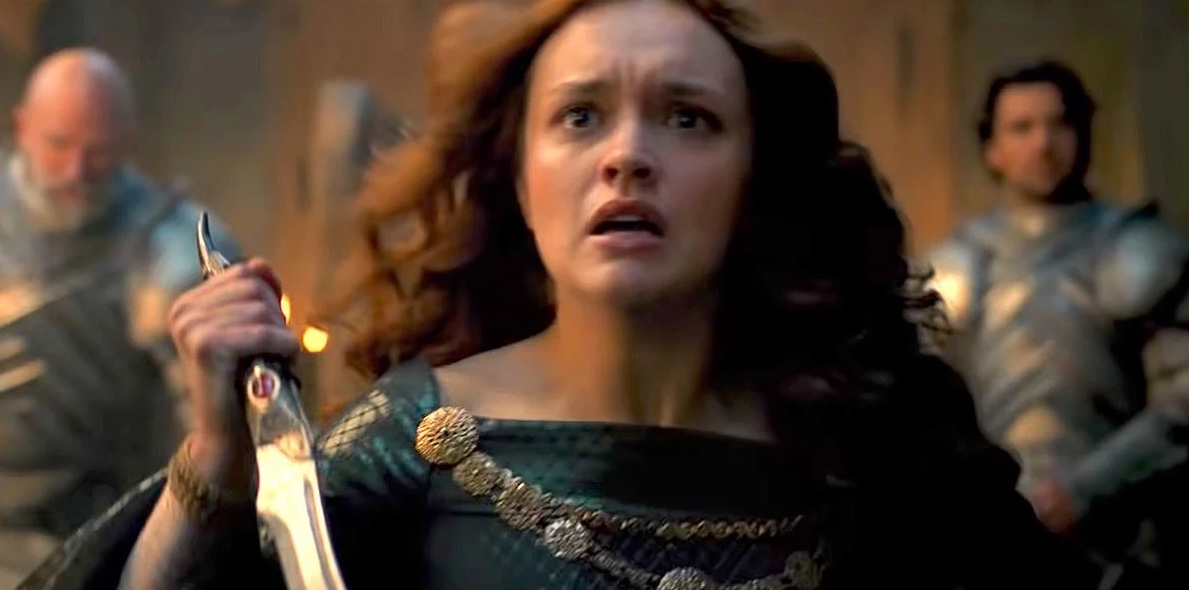
The Regency
7. Aegon III Targaryen, the Dragonbane
The first son of Rhaenyra and Daemon Targaryen, Aegon was crowned Aegon III when he was ten after the death of his uncle Aegon II— putting an end to the Dance of the Dragons. Aegon’s younger years were marked deeply by the bloody events of the war—and they left him a silent, brooding king who would rarely laugh and flew into a rage if anyone ever so much as mentioned dragons in his presence. Understandable, since he was there to witness his mother being eaten by Aegon II’s dragon.
His first five years on the Iron Throne happened under a Regency, during which small councilors and Hands of the Kings plotted against each other for political power. Aegon’s two marriages also happened during the regency, first to his cousin Jaehaera—daughter of Aegon II, uniting the two branches of House Targaryen—and then, after her death, to Daenaera Velaryon, niece of Lord Corlys Velaryon.
The twenty-one years of Aegon III’s reign were melancholic and he was described often as a broken king ruling over a broken kingdom. He gained the epithet of “dragonbane” when the last dragon died and found true comfort only in his younger brother, Viserys, who served him as Hand of the King.
Queens: Jaehaera Targaryen, Daenaera Velaryon
Jaehaera was the only surviving daughter of King Aegon II and Queen Helaena—she wed her cousin Aegon III immediately after his ascension to the Iron Throne, when he was ten and she was eight. She died just a couple of years after her wedding. Rumors swirled that she was murdered by one of Aegon III’s regents to clear the way for another queen, who would better serve them politically.
During the famous Maiden’s Day ball—in which maidens from all corners of the realm were brought to King’s Landing and paraded in front of the thirteen-year-old Aegon III so that he could choose one of them to wed—the King’s half-sisters Rhaena and Baela Targaryen introduced him to six-year-old Daenaera Velaryon. The two wed, even though their marriage was consummated ten years later. Aegon III and Daenaera would go on to have five children—Daeron, Baelor, Daena, Rhaena, and Elaena.
The Conquest of Dorne
8. Daeron I Targaryen, the Young Dragon
Daeron Targaryen was known as the Young Dragon—since he ascended the Iron Throne when he was only fourteen. He was a born warrior and the five years of his reign were spent trying to finally complete the conquest of Westeros by bringing Dorne into the realm—something that the Targaryens had failed to do ever since Aegon and his sisters had first arrived from Dragonstone.
He studied the previous Dornish Wars and personally led a part of his army into Dorne towards Sunspear—who actually fell the year after Daeron’s coronation, at great cost of human lives. He spent some time there and then returned home to King’s Landing, taking Dornish nobles with him as hostages. It didn’t take long for Dorne to rebel once more, though—House Martell’s words are “Unbowed Unbent Unbroken,” after all.
It was during one of these rebellions that Daeron died at just eighteen years old.
9. Baelor I Targaryen, the Blessed
Baelor Targaryen became king after his older brother, Daeron I’s, death in Dorne. He was a very pious man, a stark contrast to most of the Targaryen rulers who had come before him—so much so that his first act as king was to pardon his brother’s killers and free the Dornish hostages, whom he personally returned to Dorne. And he did so by walking barefoot the entire way.
In Dorne, Baelor managed to broker peace with the Prince of Dorne by promising that the two families would unite through marriage and also obtained the release of his cousin, Aemon the Dragonknight of the Kingsguard.
Once he returned to King’s Landing, the King took several steps to make the capital into what he imagined a holy and pious place. He dissolved his marriage to Daena and locked all three of his sisters in a part of the Red Keep that would become known as the Maidenvault so that they would remain innocent and not tempt any of the men at court; he outlawed prostitution all throughout the city; he started the construction of a new great sept; and he often emptied the crown’s coffers in charitable offerings to the smallfolk.
He died during one of his numerous fasts—even though rumors spread that his uncle and the Hand, Viserys, had poisoned him, since Baelor was circling very close to the idea of forcibly converting the entire realm to the Faith of the Seven.
Queen: Daena Targaryen
Daena was the eldest daughter of Aegon III and Daenaera, but she was married to her brother Baelor for only a year before he dissolved their marriage and locked Daena—together with their sisters Rhaena and Elaena—in the Maidenvault.
Her years in the Maidenvault gained her the epithet of Daena the Defiant, since she was the most restless of the three—escaping her confinements and disguising herself as a servant. Daena was ultimately found to be pregnant—the father of her bastard son, Daemon Waters, was revealed as her cousin, Prince Aegon, only several years after his birth.
10. Viserys II Targaryen
Viserys II Targaryen was the second son of Rhaenyra and Daemon—he had served as Hand of the Queen for his brother, Aegon II, and his nephews, Daeron I and Baelor I, and he ultimately ascended the Iron Throne when the three princesses in the Maidenvault where set aside from the line of succession.
Viserys II was presumed dead in Dance of the Dragons—but he actually ended up in the Free City of Lys under the custody of the Rogares, a powerful family of bankers. When he returned to King’s Landing—to the great joy of his older brother, Aegon III—he did so with his wife, Larra Rogare.
He ascended to the Iron Throne at almost fifty years of age—and remained King for only a year, during which he did his best to issue reforms, perfect the code of laws created by the Old King and establish new trade routes. He died suddenly—some say poisoned by his son.
Queen: Larra Rogare
Larra Rogare married Viserys as he was under the tutelage of her father—who made the lords of Westeros swear that the union would be upheld, even when the prince was returned to his family in King’s Landing. She remained steadfastly Lyseni in her way of living—worshipping Lyseni gods and making no efforts in learning the Common Tongue of the realm, something that predictably made the rumor mill swirl like crazy around her.
Her three children, Aegon, Aemon, and Naerys, were born very close to one another—and Larra left the royal court after the birth of her daughter to return to her native Lys, having never felt truly at home in King’s Landing.
The Blackfyre Rebellions
11. Aegon IV Targaryen, the Unworthy
Aegon IV became known to history as “the Unworthy,” which is an immediate spoiler of how his reign went—badly.
He was a corrupt and decadent ruler, who surrounded himself with yes-men and took liberties with everyone to do as he liked. He entertained hundreds of mistresses—but he claimed that he had only ever loved nine, among which his wife was not included —and fathered several bastard children.
Aegon would clash often with his brother, Aemon, who was every inch the knight Aegon wasn’t, and his heir Daeron—especially since Aegon IV liked to publicly favor his bastard, Daemon, to whom he even gifted the Valyrian steel sword Blackfyre, the one carried by Aegon the Conqueror and all the Targaryen kings after him.
His reign ended after twelve years, but even his last decree before death was cause for trouble. He legitimized all of his bastard children, especially his “Great Bastards,” born from noble ladies thought out the realm—Daemon Blackfyre; Aegon Rivers, known as Bittersteel; Brynden Rivers, known as Bloodraven and Shiera, known as Shiera Seastar. This would jumpstart what would become known as the Blackfyre Rebellions, as the bastard branch of House Targaryen laid its claim on the Iron Throne.
Queen: Naerys Targaryen
Naerys was the last of the three children of Viserys II and Larra Rogare, described as pious and gentle and with nothing to acclimate her to her brother-husband, Aegon. The two wed under their father’s orders—but she loved Prince Aemon the best, who joined the Kingsguard soon after the two wed and would gain great renown as Prince Aemon the Dragonknight, one of the finest the Seven Kingdoms have ever seen.
Her marriage to Aegon was unhappy from start to end—her pregnancies and deliveries, of which only two resulted in healthy children, all threatened to kill her, and sadly, her last pregnancy actually did. Rumours swirled that the true father of her firstborn, Daeron, was Prince Aemon the Dragonknight— Aegon himself did his best to spread these rumors, especially once he started disagreeing more and more with his son and heir.
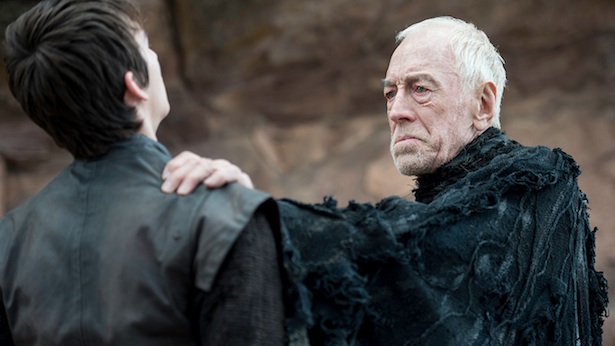
12. Daeron II Targaryen, the Good
Daeron accomplished one of the great goals of House Targaryen—bringing Dorne into the realm, and establishing the Seven Kingdoms as we have come to know them. He did so bloodlessly and through two marriages. The first was his own to Myriah Martell, the sister of the current Prince of Dorne, as his cousin, Baelor the Blessed, had promised. The second was that of his younger sister, Princess Daenerys, to the Prince of Dorne himself, Maron Martell.
Daeron started the construction of the palace of Summerhall in the Dornish Marches to symbolize this new peace—a peace that would soon be threatened by the first Blackfyre Rebellion, moved against the Iron Throne by Daemon Blackfyre and Aegon “Bittersteel” Rivers, Daeron’s half-brothers supported by several lords who still hated Dornishmen after centuries of fighting and generally didn’t much like the King’s pacifist attitude.
Another one of Aegon IV’s bastards, Brynden Rivers, known as Bloodraven—he would later become the Three-Eyed Raven that Bran Stark meets beyond the Wall in Game of Thrones—supported his brother, Daeron, and two factions were created. The Red Dragons, those who supported Daeron and followed the “classical” Targaryen sigil of a red dragon on a black field, and the Black Dragons, those who supported House Blackfyre, and its sigil, the Targaryen dragon with inverted colors.
The first Blackfyre Rebellion ended with the death of Daemon Blackfyre and two of his sons. Bittersteel escaped beyond the Narrow Sea with Daemon’s surviving children—from there, the Blackfyres would continue to trouble the Iron Throne for several generations.
Queen: Myriah Martell
Myriah Martell was the daughter of the ruling Prince of Dorne during the reign of Daeron I and Baelor I— and she was betrothed to their cousin, Daeron II, as a way to broker peace between the Iron Throne and Dorne. The marriage between the two was loving and fruitful, and they had four sons in total—Baelor, known as Baelor Breakspear; Aerys, Rhaegel, and Maekar.

13. Aerys I Targaryen
Aerys was the secondborn of King Daeron II and Queen Myriah, and he succeeded his father after the death of his older brother, Baelor, and both of Baelor’s children. He was interested in prophecies and magic—much more than he was in his wife and in ruling the Kingdoms—a task that was taken on largely by the King’s Hand, his uncle Bloodraven.
Aerys I’s reign was plagued with rebellions—first from the ironborn and then from the Blackfyres, in what would turn out to be the Second and Third Blackfyre Rebellions. The true end of both of them was the capture of Bittersteel, whom Aerys I sentenced to take the black in the Night’s Watch.
Having never sired any children of his own, Aerys I circled through most of his relatives to name his heir— first was his brother Rahegel, who died during a feast. Then it was Rhaegel’s eldest son, Aelor, who died in an accident caused by his twin and wife, Aelora. Then it was Aelora herself, who took her own life in her grief. Finally, Aerys I gave the title of Prince of Dragonstone to his youngest brother, Maekar—the fourth son of Daeron II and Myriah Martell.
Queen: Aelinor Penrose
Aelinor Penrose was Aerys I’s cousin—even though it hasn’t really been specified exactly how they were related. The king never showed much interest in her and court rumors` would have it that their marriage had never even been consummated.
14. Maekar I Targaryen
Maekar took the Iron Throne when he was almost in his fifties, with a whole life as prince who had never expected to inherit it before that. He had had time to fight with his father and older brother, Baelor, in the Blackfyre Rebellions and have six children from his wife Dyanna Dayne, who died some ten years before Maekar’s ascension to the throne.
During Maekar’s reign, generally considered peaceful even if it was slotted in the middle of two Blackfyre Rebellions, there was a particularly long summer that made many people believe that the fabled Great Summer had finally come—but like all long summers, it led to an even longer winter. Eventually, Maekar died fighting rebels in the Dornish Marches.
Queen: Dyanna Dayne
Dyanna Dayne was never officially Queen of the Seven Kingdoms, since she died long before Maekar’s ascension to the Iron Throne. Her marriage to the then Prince produced six children—Daeron, Aerion, Aemon, Daella, Aegon, and Rhae.
King Daeron II, Dyanna’s father-in-law, was concerned about the number of male Targaryen heirs milling around King’s Landing and sent Aemon to the Citadel to train as a maester, even though Maekar wasn’t on board with the idea. Maester Aemon would eventually go on to become the maester at Castle Black— where he would remain even after the fall of House Targaryen, long enough to meet one of the last surviving descendants of the dragons, his great-great-great-grand-nephew Jon Snow.
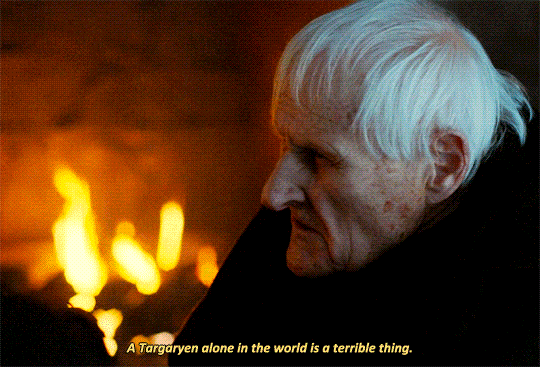
The Last Moment of Peace
15. Aegon V Targaryen, the Unlikely
Aegon V was the fourth son of a fourth son—which is why he was called “the Unlikely” upon his ascension to the Iron Throne. Normally, he never would have even come close to wearing the crown, but a series of unexpected deaths in the family placed his father, Maekar I, on the Throne, and then, Aegon himself.
Aegon had plans to become a knight of the Kingsguard, and he’s famously known for having squired incognito as “Egg” for the hedge knight Ser Duncan the Tall as a young boy—the subject of the Tales of Dunk and Egg novellas. The two traveled through the Seven Kingdoms, with Aegon keeping his head shaved to hide his Valyrian hair. Since he wasn’t expected to inherit, Aegon was free to choose whom he was going to marry—and his pick was Lady Betha Blackwood, from a relatively minor house in the Riverlands.
When his father, Maekar, was killed in the Peak Uprising, questions were raised as to who was going to succeed him, since both his eldest sons had died before him—so much so that a Great Council was convened to prevent a civil war and settle the question. The Great Council listened to all the claimants and decided to approach Aemon to offer him the crown—but Aemon refused since he was already a sworn maester, and so it was Aegon who became the next King.
Aegon was an overall good ruler, sending shipments of food to the Northmen to help them in the long winter during which his reign started and fighting in the Fourth Blackfyre Rebellion—he also spent a lot of efforts in bettering the lives of the smallfolk among whom he had lived squiring for Duncan, something that obviously displeased the high lords of the Seven Kingdoms.
Aegon and his Queen, Betha, were set against the Targaryen practice of brothers and sisters marrying, and arranged political matches for their children—matches that they all promptly disregarded, causing a good number of political strife. The most egregious of these was the broken betrothal of Aegon’s heir, Prince Duncan, with the unnamed daughter of the then Lord Baratheon. Duncan fell in love with the mysterious Jenny of Oldstones and decided to marry her—renouncing both his engagement to Storm’s End and the title of Prince of Dragonstone.
Storm’s End rose in rebellion, which was smoothed down only by promising that Princess Rhaelle Targaryen would wed the Baratheon heir, Ormund—Rhaelle was the grandmother of Robert, Stannis, and Renly Baratheon, and it was through her that Robert was able to claim a direct bloodline to the Iron Throne and take it after the Rebellion.
Aegon’s reign ended with the great tragedy of Summerhall in 258. The king had become convinced that only dragons could maintain the peace in the realm, as it had been for his ancestors— and so he tried to wake them again from their eggs, causing a terrible fire that consumed the castle and everyone inside, including the King, Prince Duncan and his Lord Commander of the KIngsguard, Duncan the Tall.
Queen: Betha Blackwood
Betha Blackwood, also known as Black Betha, married Prince Aegon when they were both young and he had no expectations of inheriting the Iron Throne—theirs was a marriage of love, something that their children would go on to have despite Betha’s careful planning of politically advantageous matches. They had a total of five children—Duncan, Jaehaerys, Shaera, Daeron, and Rhaelle.
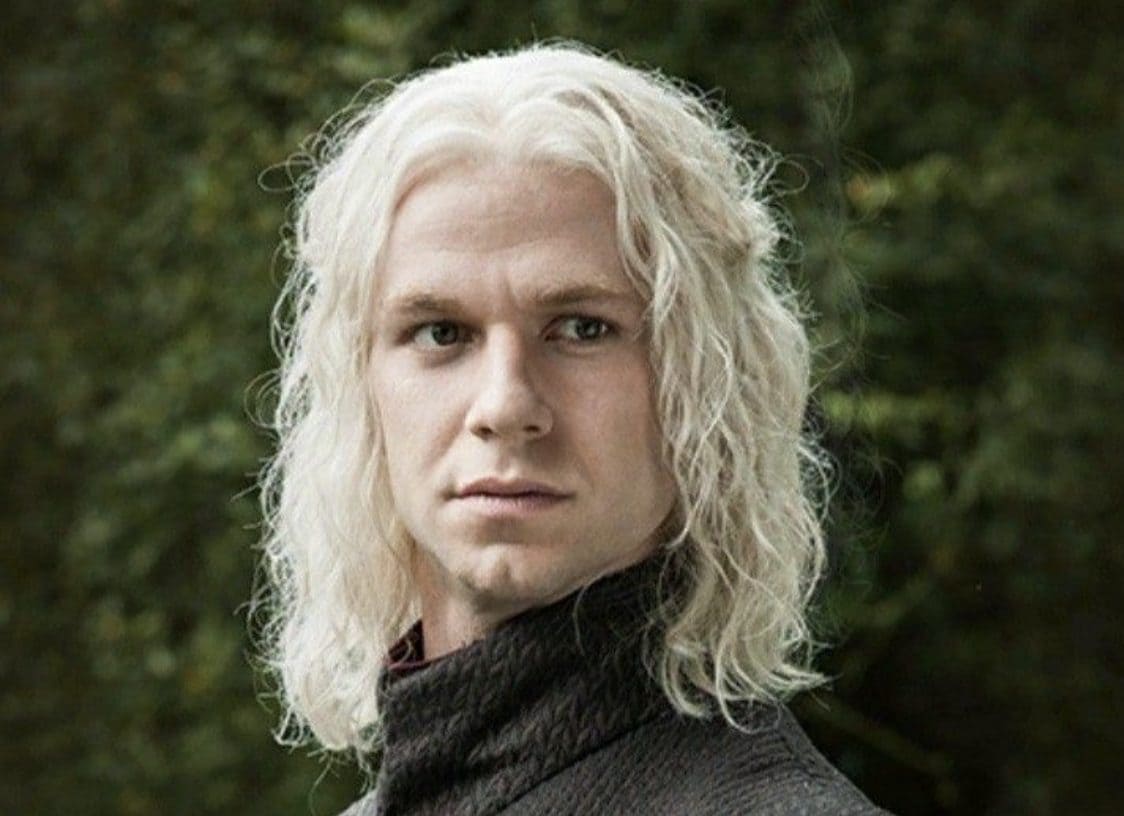
16. Jaehaerys II Targaryen
Jaeherys II became Prince of Dragonstone when his older brother, Duncan, renounced his claim on the Iron Throne to marry Jenny of Oldstones—and he became king when his father Aegon V died at the tragedy of Summerhall. He ruled for only three years, most spent fighting the War of the Ninepenny Kings in the Stepstones. They included the very last Blackfyre pretender, Maelys the Monstrous—slain in combat by the (then young) knight Barristan Selmy.
Jaehaerys died of illness but he proved a very capable King, nonetheless, ending the Blackfyre rebellions once and for all and reconciling with many of the Great Houses that had grown unhappy during his father’s reign.
Queen: Shaera Targaryen
Shaera and her brother, Jaehaerys, married for love, even if their father, Aegon V, had planned political matches for them both and didn’t want to continue the Targaryen practice of incestuous marriages. They had two children, Aerys and Rhaella, whom they also commanded to wed—in this case, however, both brother and sister were against it.
The Fall of the Dragons
17. Aerys II Targaryen, the Mad King
The last member of House Targaryen to sit upon the Iron Throne was the infam,yous Aerys II, known to history as the Mad King.
The first years of Aerys’s reign actually started well enough, filled with potential and ambition—especially thanks to the King’s Hand, Tywin Lannister. However, the relationship between the two eventually deteriorated, as Aerys turned jealous of Tywin’s efficiency and did everything in his power to humiliate him at court.
A turning point in Aerys’s mental state was the Defiance of Duskendale—during which the King was held captive for six months by House Darklyn. Once he was freed, he predictably ordered the entire house to be tortured and burned alive. The Defiance of Duskendale sent Aerys spiraling down into the well of paranoia and cruelty—he developed a taste for burning people alive and a fascination with wildfire.
And then there was the tourney at Harrenhal of 280, which precipitated the events of the Rebellion—all starting with Rhaegar Targaryen winning the joust and naming Lyanna Stark the Queen of Love and Beauty rather than his wife, Princess Elia Martell. A year later, Rhaegar and Lyanna disappeared, prompting her brother and father to ride down to King’s Landing to demand her release. Aerys had them both executed—and that’s when Lyanna’s next brother and her betrothed, Ned Stark and Robert Baratheon, mounted their rebellion against the Iron Throne.
The King’s end arrived with the Lannister army standing outside the doors of King’s Landing. The King decided he would rather see the capital burn—igniting the wildfire he had stashed all around it—rather than handing it over. And so Jaime Lannister of the Kingsguard killed him, earning the epithet of kingslayer, saving the city and its people and putting an end to the Rebellion, as well as to almost three centuries of Targaryen rule.
Queen: Rhaella Targaryen
Rhaella wouldn’t have wanted to marry her brother Aerys, and did so only because their parents forced them. Her first son, Rhaegar, was born during the tragedy of Summerhall. Still, her following pregnancies would be quite difficult and she went through multiple miscarriages, stillbirths, and children dying only a few months after coming into the world.
All of this made Aerys slip even further into paranoia, and he grew abusive towards Rhaella—who was often seen scratched and burned at court. During the Rebellion, the pregnant Queen escaped to Dragonstone with her youngest son, Viserys, while her eldest, Rhaegar, was fighting Robert Baratheon on the Trident. Rhaella didn’t survive the birth of her last child, Daenerys, who came into the world as a terrible storm raged over Dragonstone.
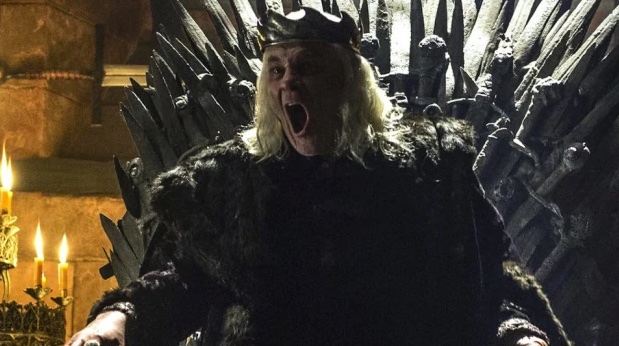
The New Dynasty
We know what happens at the end of the Rebellion from both the A Song of Ice and Fire books and the Game of Thrones show—Robert Baratheon takes the Iron Throne, becoming the eighteenth King to rule over the Seven Kingdoms. He’s a great warrior but a poor King, and he’s succeeded by an ever worse one—Joffrey Baratheon, officially Robert’s eldest son but really the bastard son of Cersei and Jaime Lannister.
After Joffrey is poisoned at his own wedding, his younger brother Tommen succeeds him as the twentieth King on the Iron Throne. And that’s where we have remained in the books. In the last seasons of Game of Thrones, Tommen’s mother, Cersei, rules as regent after his death.
Keeping with show canon, this is also where Daenerys Targaryen’s place in the line of rulers of the Seven Kingdoms should be, before the battle at King’s Landing and her murder at the hands of Jon Snow. After that, the restored monarchy—minus a now independent North—becomes elective with the first King of this new era being Brandon Stark, the Three-Eyed Raven.
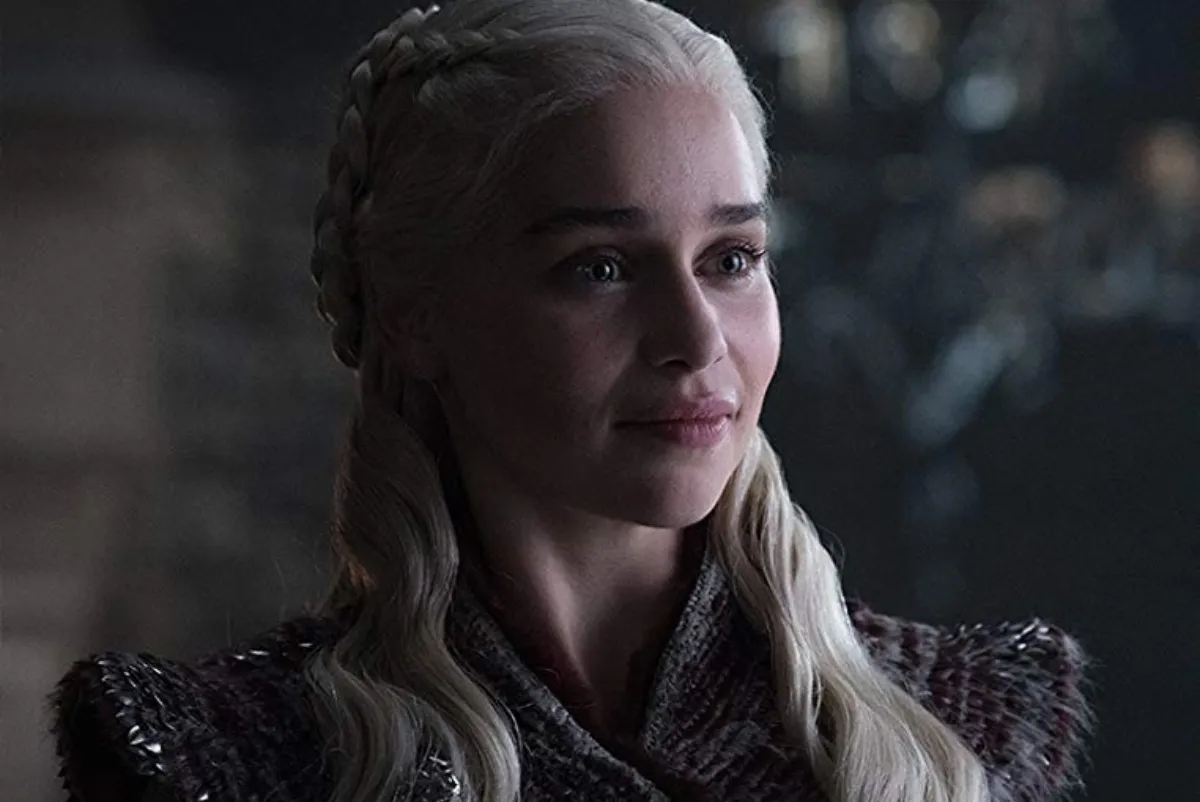
All that’s left to see after this very long list is if the books are going to end up in the same place the show did.
(source: AWOIAF; image: HBO)



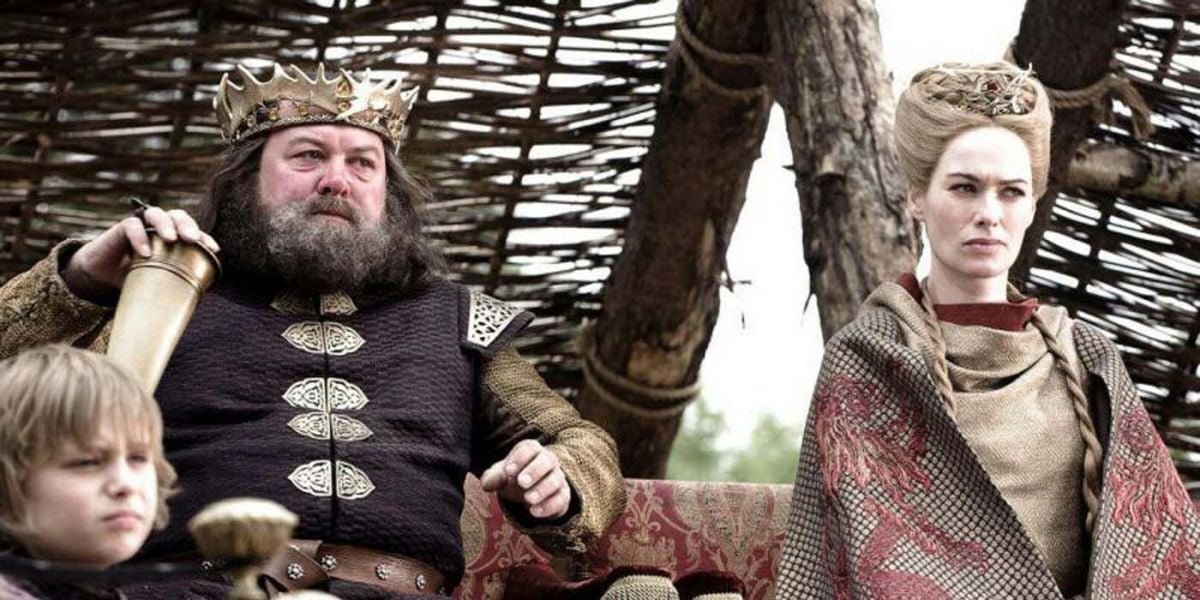

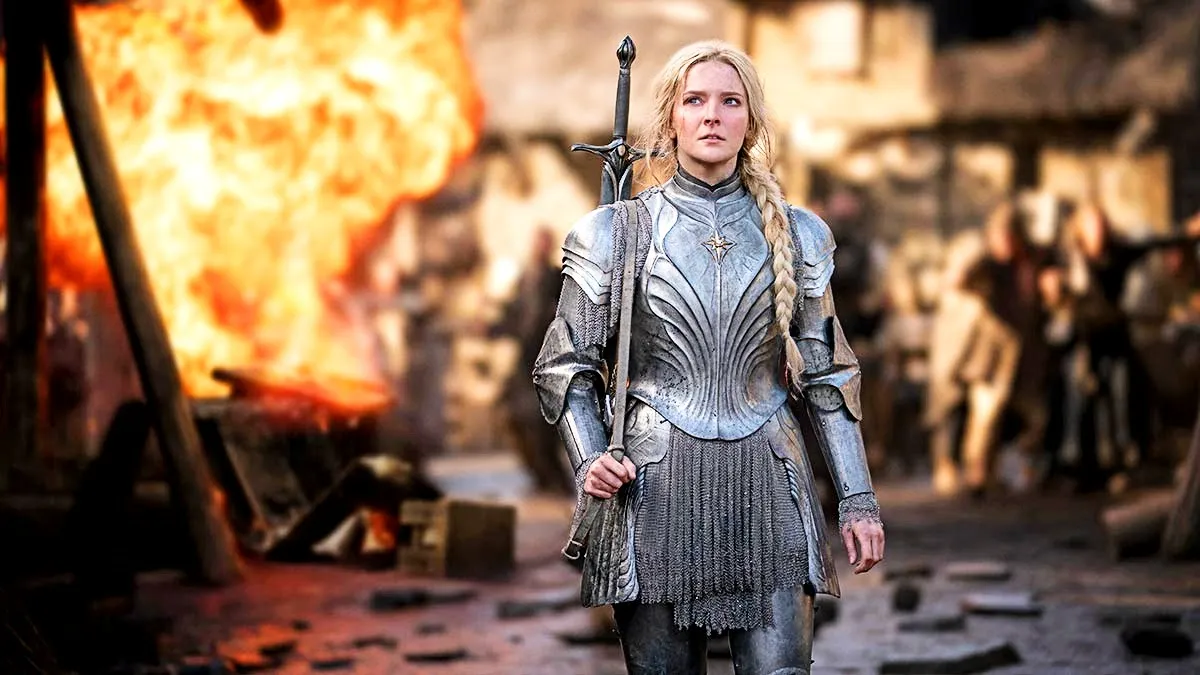



Published: Sep 7, 2022 01:16 pm